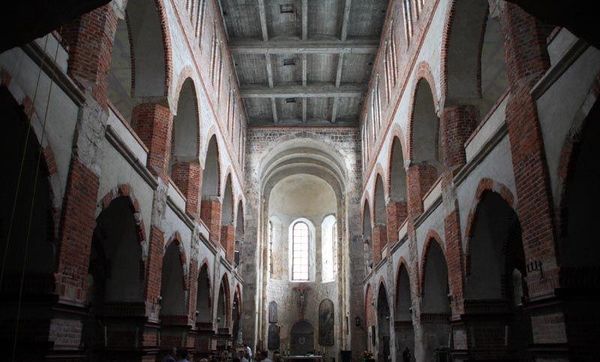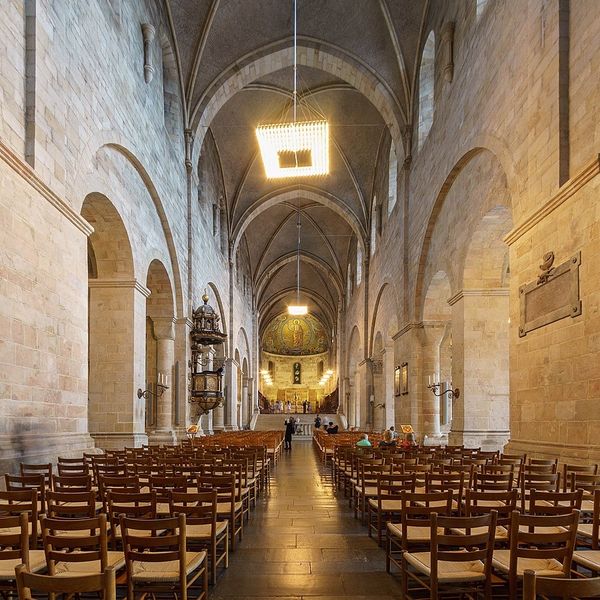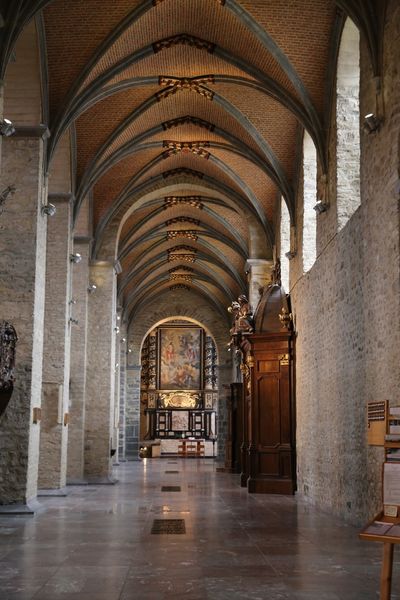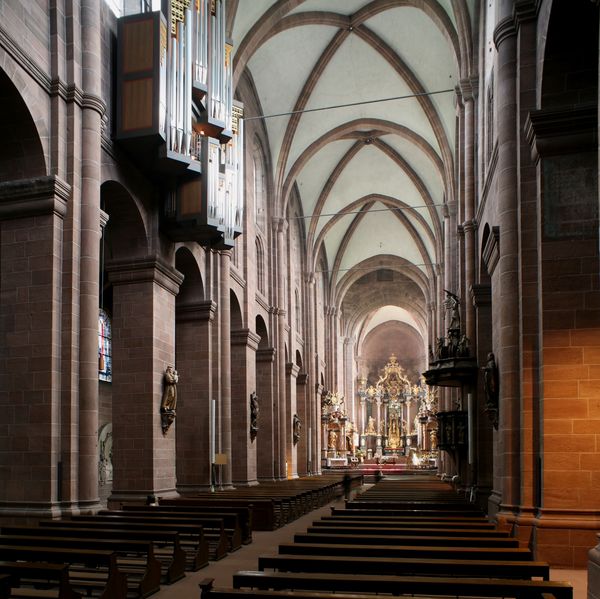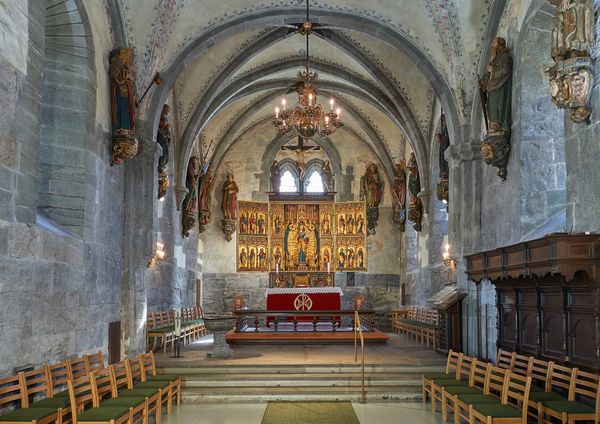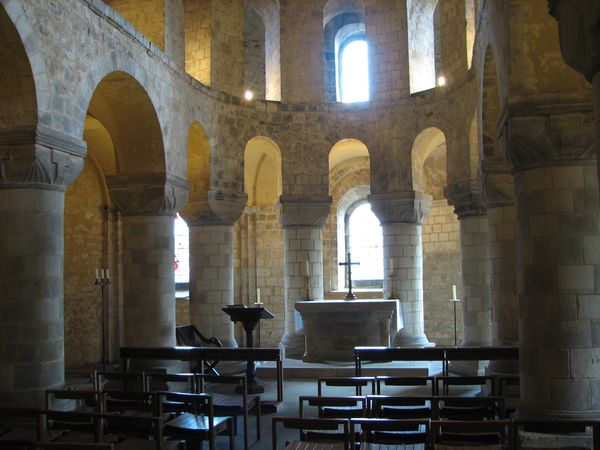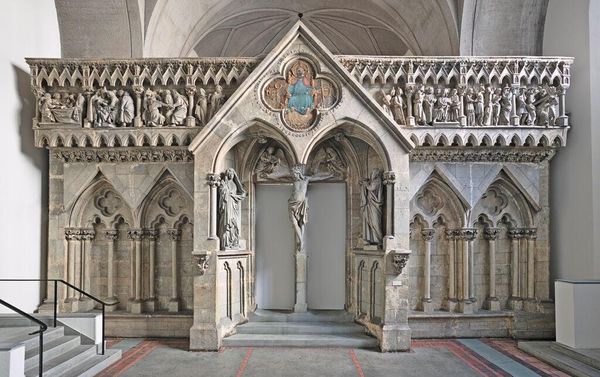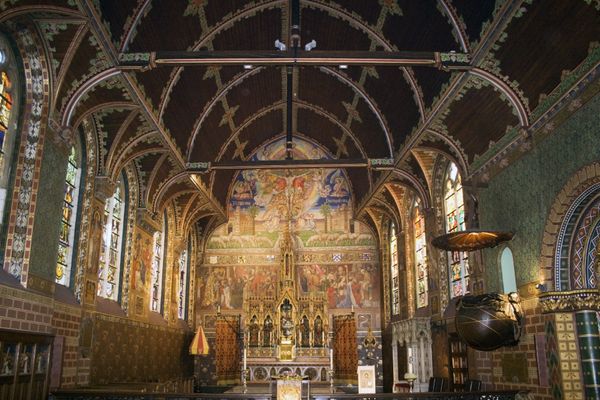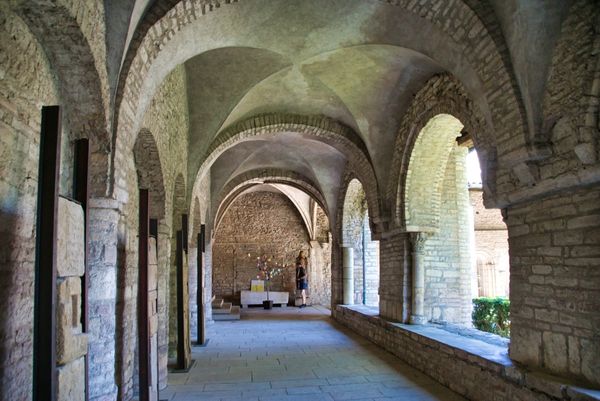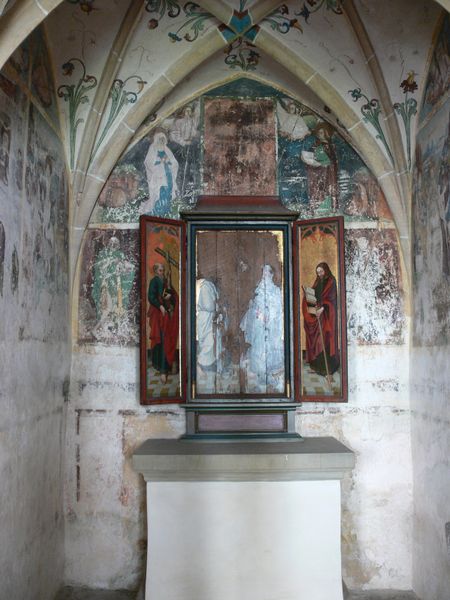
sculpture, marble, architecture
#
medieval
#
sculpture
#
historic architecture
#
romanesque
#
column
#
sculpture
#
arch
#
marble
#
architecture
#
historical building
#
statue
Copyright: Public domain
Editor: This is an image of the interior of the Church of Saint Anne in Aldeneik, Belgium, dating back to 1150. It seems to capture a strong sense of architectural history and religious significance through its columns, arches, and statues. How do you interpret this space, especially considering its historical context? Curator: Looking at the interior, I'm struck by how the Romanesque style here reflects the social power structures of the medieval era. The monumental scale, repeated arches, and minimal light weren’t just about creating a sacred space. It was designed to instill a sense of awe and perhaps even submission in the congregation, reinforcing the Church’s dominance in a society deeply divided by class and gender. Editor: That’s fascinating! I hadn't considered how architecture could be a tool for social control. Were there specific visual elements aimed at women or lower classes in particular? Curator: Think about the restricted access to certain parts of the church for women, and the placement of the pulpit. The sculptures adorning it, likely depicting biblical figures, were a form of visual teaching, reinforcing a patriarchal religious narrative accessible even to the illiterate. What do you think those narratives would convey about roles and expectations within that society? Editor: It makes me consider the role of religious institutions in shaping societal norms. It’s interesting to see architecture, not just as a physical space, but as a reflection and reinforcement of those power dynamics. Curator: Exactly. And thinking about contemporary art practices, how might artists today engage with similar power structures, perhaps critiquing or subverting them through installation or performance art in ways that respond to the legacy of spaces like this church? Editor: This has completely changed how I view historical buildings. It's no longer just about admiring the artistry, but also understanding the social and political forces at play during its creation and continued use. Curator: Indeed. It's a constant dialogue between the past and the present, pushing us to critically examine the built environment and its impact on our lives.
Comments
No comments
Be the first to comment and join the conversation on the ultimate creative platform.
